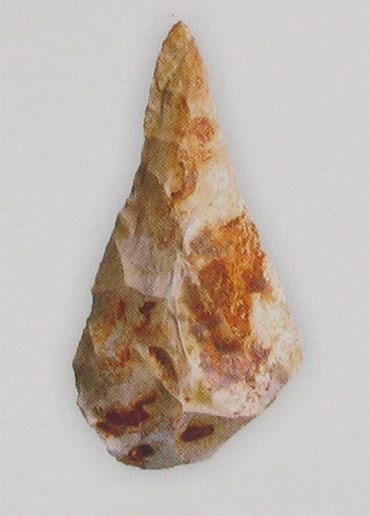Kokkinopelos
Kokkinopelos, an open-air area located close to the Louros River and the settlement of Agios Georgios on the Preveza-Ioannina national road, constitutes perhaps the most ancient archaeological site so far not only of Epirus but of entire Greece.

Description:
Besides its momentous historical background, it impresses through its characteristic colour as well as the corrosion sustained over time by rainwater. It remains unclear still when and how it was formed.
As it was situated on one of the main natural passes close to the abundant waters of the Louros River and offered plenty of game for food and clothing, it attracted prehistoric humans quite early on in history. A stone hand axe found in recent years, (one of the few examples of the Helladic area) which dates back 250,000-200,000 years, along with some other indications to the area’s date - as yet unconfirmed since they do not come from excavation evidence - lead us to the Lower (most ancient) Paleolithic period. The indications for the subsequent eras, the Middle and Upper Paleolithic (200,000-10,000 to date), are clearer, as survey work and excavation on the site have revealed several stone tools which incontestably proves its inhabitation during the above mentioned period of time. It is believed that it was inhabited by the same group or groups who dwelled in Asprochalico and some more sites in the valley of Louros. However, it cannot yet be determined whether this location, which is also the largest in the area, constituted the main location for seasonal settlement, or if its role varied in relation to climate changes. In any case, Kokkinopelos constitutes one of the few sites of the Helladic area which is related to the transition from Neanderthal to modern populations. It remains to be determined how this transition occurred and how modern humans, Homo sapiens, managed to prevail over them. From some leaf-shaped spearheads found here, which are considered to be their tools, it has emerged that Homo sapiens crossed the Helladic region on their way from the Near East to Western Europe. Nevertheless, since there are no skeletal remains (the reddish soil’s composition did not contribute to their preservation), it is hard to say with certainty to what species the groups who inhabited both this and other areas of Epirus belonged to.


